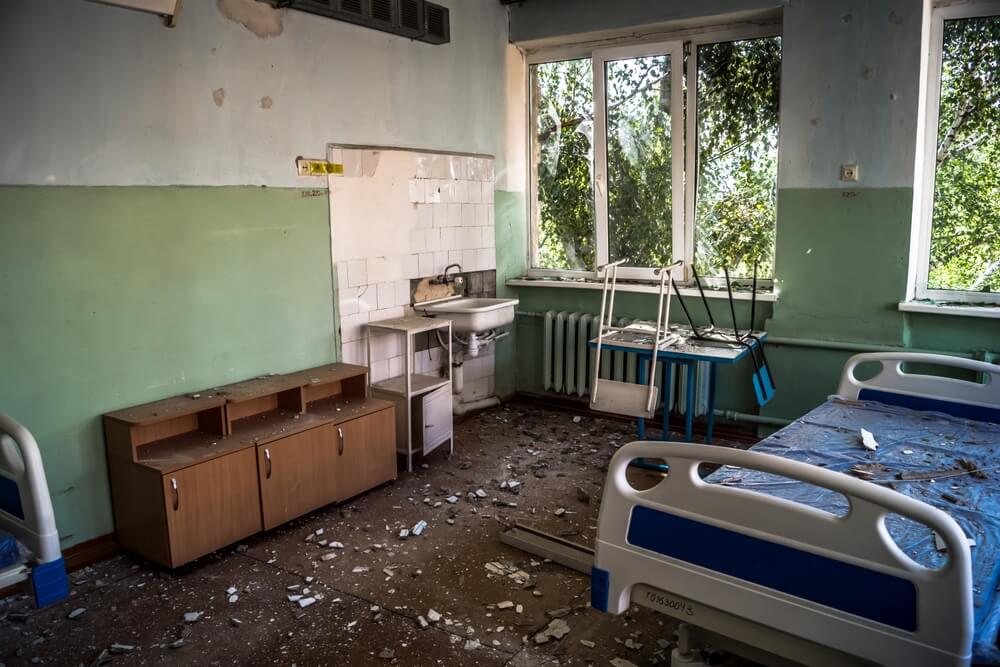Demand for cancer care services is rising as Ukraine enters its fourth year of full-scale war, which has severely disrupted access to oncology diagnostics and treatment amid shortages of trained personnel, medical supplies and funding, says a World Health Organisation report.
Since the war started in February 2022, Ukraine’s health budget has fallen as resources have been diverted to the military effort to prevent Russia occupying the entire country, where there is military conscription, including medical professionals.
“Cancer service availability in Ukraine remains critically low,” says the WHO’s Public Health Situation Analysis.
Cancer is the second most common cause of mortality in Ukraine, behind cardiovascular diseases. Before the war, an estimated 139,000 Ukrainians were living with newly diagnosed cancer. Last year, Ukraine recorded 111 153 cases of malignant neoplasms, says WHO.
Health system under enormous stress and strain
Data collection, particularly near the active frontline in eastern Ukraine, is difficult, and experts believe the true situation to be under-reported. Some health indicators of strategic importance, including mortality data, are not publicly released during wartime under martial law.
“According to the work of Ukrainian colleagues who looked at medical registers, there were 140 000 cases of the six major cancers alone in 2023 and a likely total of up to 200 000 of all cancers,” Richard Sullivan, King’s College London, UK, told The Lancet Oncology.
The six most common cancers are breast, lung, colon and rectum, prostate, skin (non-melanoma), and stomach cancer.
The major obstacles to health include missile attacks on healthcare facilities and on infrastructure, leading to electricity and water shortages
“There’s no doubt the health system is under enormous stress and strain and there are about 3 million internally displaced people, two-thirds of whom are vulnerable,” he said. “Cancer patients are presenting late if at all while some others are going abroad for treatment if they can. Remarkably many centres are still functioning despite the constant attacks.”
The major obstacles to health include missile attacks on healthcare facilities and on infrastructure, leading to electricity and water shortages, says Yelyzaveta Nepyipyvo of ZDOROVI, a Ukrainian charity which supports hospitals and medical professionals and is a partner of the Polish Humanitarian Action aid agency.
“Since the start of the war until June 2025, 769 healthcare facilities were damaged or destroyed,” she told The Lancet Oncology.
Big drop in funding
High numbers of wounded military personnel are often given priority in civilian health facilities, said Daniel Solchanyk of Razom, an aid and advocacy non-profit. “There’s also been a huge brain drain of medics as those with means get out as well as a big drop in funding including from USAID,” he told The Lancet Oncology.
 The Ukraine Cancer Relief Program was set up after the oncology hospital in Kharkiv was bombed in April 2022
The Ukraine Cancer Relief Program was set up after the oncology hospital in Kharkiv was bombed in April 2022
The Ukraine Cancer Relief Program was set up after the oncology hospital in Kharkiv was bombed in April 2022. “We became the first organization in the world to provide full chemotherapy courses under siege conditions,” Yuliya Shevchuk of Mission Kharkiv, partner of aid agency Mercy Corps, told The Lancet Oncology. “Despite significant humanitarian resources flowing into Ukraine, oncology was not considered part of the humanitarian response.”
Funding shortfalls had created a “heartbreaking” situation, said Sarah Easter of the humanitarian agency CARE that runs mobile health teams. “Imagine visiting a cancer patient or someone with advanced heart disease and having to tell them you can't provide the treatment they need,” she told The Lancet Oncology.
Coping strategies
Out-of-pocket costs for medical care are an increasing burden, said Yuriy Boyechko of the Hope for Ukraine aid organisation, which helps patients with medical payments. “One elderly lady I know faced paying $300 a month for chemotherapy drugs but senior citizens only get pensions of around $50-$100 a month,” he told The Lancet Oncology.
Coping strategies include informal payments, utilising personal connections, and deciding to forego treatment, according to a recent paper co-authored by Olena Levenets, Maastricht University, The Netherlands.
Médecins Sans Frontières screens with x-rays for tuberculosis and it found 27 cases of suspected lung cancer patients who were referred for diagnosis
“Cancer patients, especially those with no medical connections, have to become very resourceful to navigate their treatment journey, to understand what help is free of charge and who is the best or most experienced doctor, on top of the distress caused by their cancer,” she told The Lancet Oncology.
Médecins Sans Frontières screens with x-rays for tuberculosis through its mobile clinics in the Kherson and Mykolaiv regions, and between July and September this year, it found 27 cases of suspected lung cancer patients who were referred for diagnosis, Nara Duarte Garrido, an MSF medical co-ordinator, told The Lancet Oncology.
“The top three diagnoses in our mobile clinics in the south and east of Ukraine are ischaemic heart disease, diabetes and hypertension. We also see a lot of gynaecological disorders, urogenital atrophy and uterine prolapse,” she said. “The main message we want to get out is about the seriousness of NCDs in Ukraine.”